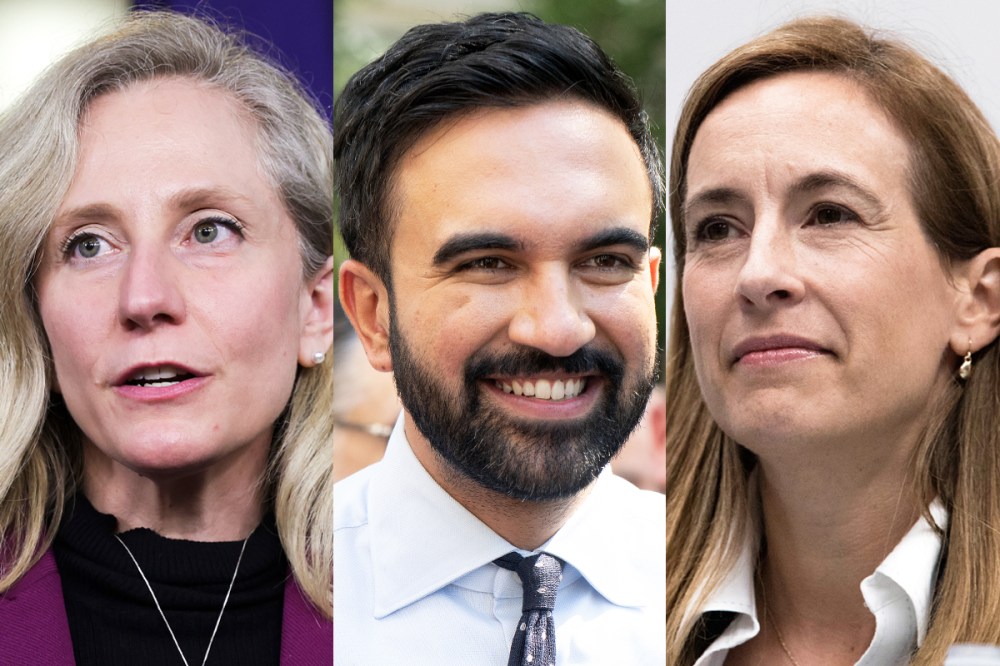The Democratic Party can’t agree on much these days — not on shutdown strategy, not on Gaza, not on “abundance.” But walk into any Democratic campaign event this election season, and you’ll hear the same refrain, regardless of where that candidate sits on the ideological spectrum: The cost of living is too expensive, and we’re going to fix it.
From democratic socialist mayoral candidate Zohran Mamdani in New York to centrist gubernatorial hopefuls Mikie Sherrill in New Jersey and Abigail Spanberger in Virginia, the party’s message has crystallized around a single promise: making life more affordable.
Whether they’re successful — and whether Democrats will continue to use that message as a rallying cry in the 2026 midterms — may be decided on Tuesday when voters go to the polls.
The message is a departure from recent election cycles, when the party relied on opposition to President Donald Trump as the glue that held their electoral coalition together. And it’s a signal, perhaps, that they’ve learned something from Trump’s electoral success.
In media interviews, debate appearances and campaign speeches, Mamdani has pledged to fight with Trump on nearly every aspect of his agenda — from his ramped-up ICE deportations to his threats to deploy the National Guard to the country’s largest city — except for one: lowering costs.
In fact, affordability is one of the few areas in which Mamdani has offered tepid praise to the president, including at a stadium-packed rally on Sunday that featured fellow progressives, Rep. Alexandria Ocasio Cortez, D-N.Y., and Sen. Bernie Sanders, I-Vt.
“Trump, for all his many flaws, had promised [voters] an agenda that would put more money in their pockets and lower the cost of living,” Mamdani said.
Though Mamdani couched his praise with an assertion that Trump has since “lied” about executing that promise, the statement still marks an acknowledgement of the power of the affordability-focused message that fueled Trump’s victory last year over former Vice President Kamala Harris, when graphics illustrating the rising cost of basic foods such as eggs were a mainstay at Trump’s campaign events.
“What that man named Donald Trump did do is he said, ‘I feel your pain. I know that you’re hurting, and I have an explanation,’” Sanders said during an interview with CNN, days after he issued a scathing rebuke to Democrats for “abandoning working class people.”
It’s not that recent Democratic campaigns haven’t focused on the working class — despite the perception that Harris missed the mark on centering affordability, she did release proposals to lower the costs of groceries, child care and health care. Rather, the scope of issues Democrats have elevated in their campaigns has narrowed. In short: It’s all about affordability, a strategy that DNC Chair Ken Martin credited this month for recent party wins and polling advantages.
“Democratic candidates up and down the ballot have effectively focused on affordability while painting their opponents as too extreme and too closely aligned with Donald Trump,” Martin wrote in a recent memo.
In their platforms, remarks and ads, this year’s Democratic candidates have distanced themselves from the issues that dominated previous election cycles — gender equality and police reform among them — to instead home in on a message focused on lowering costs.
It’s a message focused less on former President Biden’s call to “restore the soul of the country” or the ambiguities of strengthening “American values,” and more on the concrete reality of rising costs.
And the shift is most apparent in candidates that have previously run for office.












